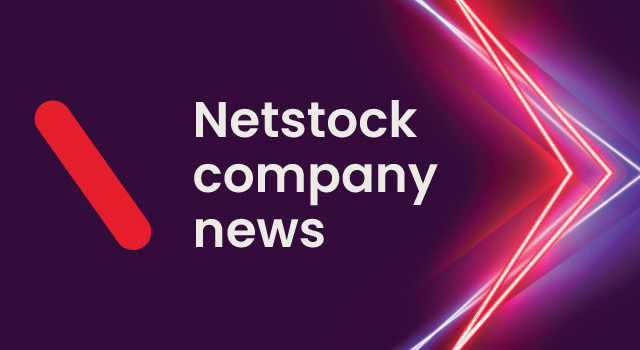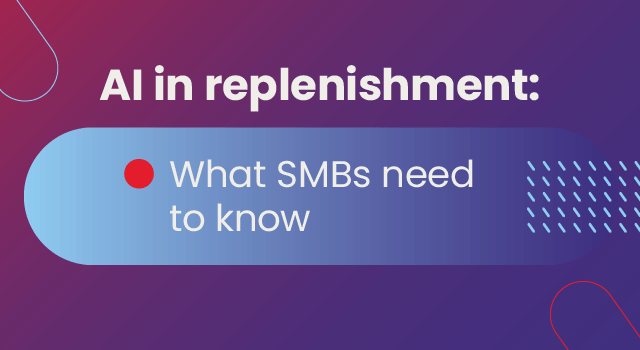What’s in this blog?
Your customers stand at the heart of effective demand planning. Supply chain professionals must quickly understand customer requirements, preferences, and behaviors to make strategic choices about production, inventory levels, and distribution networks.
Strong demand planning processes help businesses to reduce stock-outs, shorten lead times, enhance product availability, and deliver the right products at the right time, in the right quantities, and to the correct locations.
In this blog, we explore how accurate data-driven demand planning can transform your supply chain: from the methods behind accurate forecasting to practical strategies that sharpen your planning process.
What’s in this blog:
- Understanding demand planning vs. forecasting
- Why demand planning matters for your supply chain
- Five trends reshaping demand planning in 2025
- Key performance indicators that drive demand planning
- Demand planning techniques that drive results
- Practical ways to enhance your demand planning
- How Netstock elevates your demand planning
Understanding demand planning vs. forecasting
Demand planning encompasses the complete process of predicting, managing, and fulfilling customer demand. While forecasting focuses specifically on predicting future demand based on historical data and trends, demand planning takes these forecasts and translates them into actionable business strategies.
A supply chain manager at a manufacturing company described it perfectly: “Forecasting tells us what might happen; demand planning decides what we’ll do about it.”
Effective demand planning entails cross-functional collaboration among sales, marketing, finance, and operations teams to develop a unified plan that balances customer needs with business objectives.
Why demand planning matters for your supply chain
Demand planning directly impacts every aspect of your supply chain operations:
- Inventory optimization: Precise demand planning enables the determination of optimal inventory levels. By accurately predicting future demand, you can avoid tying up capital in excess stock while preventing stockouts that disappoint customers and result in lost sales.
- Production efficiency: By understanding anticipated demand, you can schedule production runs more efficiently. This optimizes manufacturing processes, reduces lead times, and prevents production bottlenecks that might otherwise delay fulfillment.
- Supplier collaboration: Reliable demand plans facilitate more effective collaboration with suppliers. Your vendors can align their production schedules with your anticipated needs, resulting in improved coordination, shorter lead times, and enhanced efficiency throughout your supply chain.
- Resource management: Demand planning helps allocate resources where they’re most needed. By predicting future demand patterns, you can appropriately distribute workforce, machinery, and other resources to prevent shortages or excess capacity.
- Financial performance: Accurate demand planning facilitates effective financial planning. You can estimate future sales revenue, manage cash flows, and make informed decisions about investments and expansion plans.
- Customer satisfaction: Perhaps most importantly, good demand planning drives customer satisfaction. By maintaining adequate stock levels and fulfilling orders promptly, you’ll build loyalty and reputation in your market.
Five trends reshaping demand planning in 2025
External factors continue to influence supply chain planning. Economic conditions, geopolitical issues, inflation, and supplier challenges all impact your ability to meet demand. Additionally, consumer purchasing behaviors have undergone significant shifts since the pandemic. Modern demand planners now work with real-time data, leverage predictive analytics, and collaborate across functions to adapt their strategies effectively.
Consider these five trends when approaching demand planning:
1. Evolving consumer behavior
Buying patterns have become more digital, value-driven, and environmentally conscious. Demand planners must account for increased online channel demand and adjust inventory strategies accordingly.
2. Nearshoring and friend-shoring growth
Companies are relocating supply sources closer to home or to politically aligned countries to secure a reliable supply. This requires reviewing your supplier network and updating demand plans to reflect new lead times and ordering patterns.
3. End-to-End supply chain visibility:
Technology enabling complete supply chain visibility has become essential. With clear insight into inventory levels, fill rates, safety stock positions, and supplier performance, you can identify potential issues before they impact your ability to meet demand.
4. Predictive technology investment:
Scenario modeling capabilities let planners quickly assess the impact of different demand scenarios on the supply chain. This technology helps build more resilient plans that can adapt to changing conditions.
5. Material availability challenges:
Identifying high-demand items remains crucial for sourcing materials effectively while developing strong supplier relationships that provide priority access during shortages.
Key performance indicators that drive demand planning
Measurable metrics help assess supply chain performance and inform your demand planning process. With clear visibility into these KPIs, you can identify opportunities for improvement, make informed decisions, and optimize planning processes.
Stock holding
Your inventory includes all products or materials in storage before sale or use in production. Monitoring stock holding helps balance inventory levels—ensuring you have enough to fulfill orders while avoiding excess that ties up capital. The goal is bringing actual stock holding close to your model stock value while maintaining or improving fill rates.
Fill Rate
This metric measures the percentage of customer demand successfully fulfilled from available inventory. It serves as a gauge of how well you service customers with available stock. Monitoring fill rates helps identify demand variability patterns and determine appropriate safety stock for volatile items or those with unstable supply.
Replenishment cycle
This represents the time needed to restock inventory after sales. The length of your replenishment cycle impacts demand planning by affecting lead times, stock-outs, overstocking, and seasonal planning. A shorter cycle allows more frequent forecast updates, while longer cycles require accounting for more potential fluctuations.
Supplier performance
Unreliable lead times or partial deliveries from suppliers can lead to stock-outs and fulfillment delays. Monitoring supplier performance helps adjust demand plans to account for variability, ensuring more realistic expectations and better customer service.
Demand planning techniques that drive results
Effective demand planners combine multiple approaches to improve forecast accuracy:
Quantitative methods
These techniques use historical data and statistical models to identify patterns and trends. Time series analysis, regression models, and moving averages help establish baseline forecasts based on past performance.
Qualitative approaches
Expert opinions and market research complement quantitative methods. Sales team insights, customer feedback, and competitor analysis provide context that numbers alone can’t capture.
Scenario planning
Modeling various demand scenarios helps prepare for different possible futures. By understanding how changes in pricing, marketing, or external factors might impact demand, planners can develop contingency strategies.
Customer segmentation
Breaking down customers into segments based on behavior and preferences allows for more targeted forecasting. Different customer groups often show distinct demand patterns worth analyzing separately.
Market indicators
Tracking economic signals that correlate with your product demand provides early warning of potential changes. Consumer confidence indices, employment rates, and housing market trends often foreshadow shifts in demand.
Predictive analytics
Advanced algorithms analyzing large datasets can identify subtle patterns humans might miss. Machine learning algorithms continually improve as they process more data, resulting in increasingly accurate forecasts.
The manufacturing director at a consumer goods company shared: “We used to rely solely on historical data, but combining that with our sales team’s market intelligence and predictive analytics has dramatically improved our forecast accuracy.”
Practical ways to enhance your demand planning
Build customer relationships
Stay close to your customers by monitoring their behavior, building direct relationships, and leveraging their data. Integrate information from sales records, loyalty programs, and online transactions into your forecasting models to identify patterns and drivers that influence purchasing decisions.
Strengthen supplier partnerships
Develop strong relationships with suppliers to stabilize lead times and improve forecast accuracy. Regular communication gives you insight into suppliers’ challenges and capacity. Sharing your forecast with suppliers enables them to plan accordingly and identify potential issues early.
One distribution company achieved remarkable results from this approach: “By sharing our 12-month projected order forecasts with suppliers, we have strengthened relationships and created successful collaborations that benefit both parties.”
Continuously review and adjust
Establish a regular review cadence to assess forecast accuracy. Track actual demand against predictions and analyze discrepancies to identify opportunities for improvement. This feedback loop enables iterative adjustments that refine your forecasting models over time.
Implement specialized planning software
Utilizing demand planning technology with advanced analytics capabilities can significantly enhance forecast accuracy. These tools analyze historical data, identify patterns, and make predictions that account for multiple variables simultaneously.
An apparel manufacturer discovered that “In our industry, one pair of pants may have 200-250 available sizes across all waist and inseam options. We use statistical models at the product level and then apply historical averages to develop forecasts down to the SKU level.”
How Netstock elevates your demand planning
Netstock’s demand planning functionality empowers planners to quickly adapt forecasting models as markets evolve and customer behaviors shift. The platform offers granular demand visibility across SKUs, regions, and channels, with the ability to forecast at any group level in base units, price, cost, or margin.
The system identifies outliers, such as seasonality, promotions, and special events, enabling more informed decisions. By implementing Netstock’s demand planning capabilities, businesses gain the tools to balance inventory investments, improve customer service, and maximize profitability across their supply chain operations.




